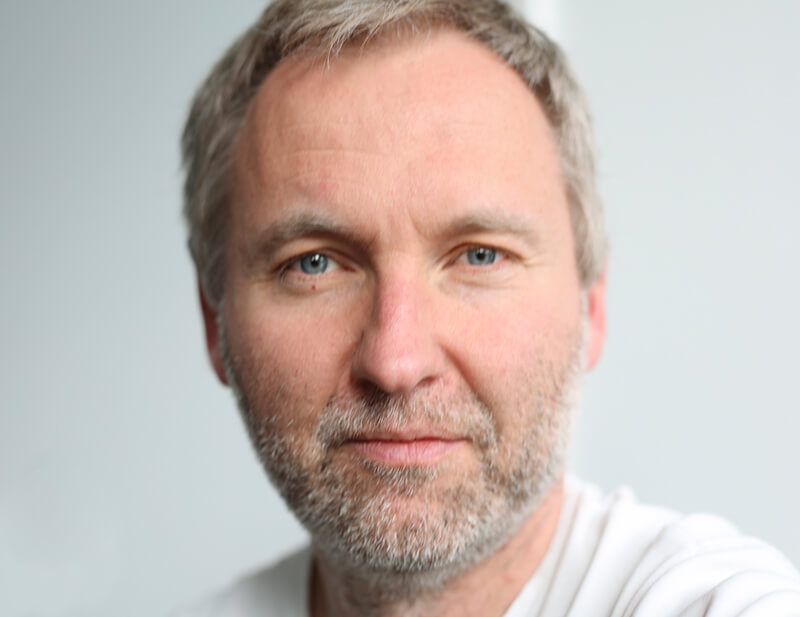Cédric Delsaux was born in 1974. For almost 20 years, his oeuvre has sought to deconstruct our conventional view of the relationship between reality and photography. His aim is for the medium of photography to no longer directly express Reality, but rather the Fiction through which it is perceived.
First known for his work as an advertising photographer, he has since made a name for himself through his personal long-term photo series. His first, Here To Stay/Nous resterons sur terre, was published in 2008 in France, and by Monacelli Press (Random House) in the US the following year. This series takes us on a subjective tour of symbolic places in our (post)modern world; these places are at once beautiful and ugly, conventional and crazy. His second, Dark Lens, was published in France in 2011 by Éditions Xavier
Barral, distributed in the US by D.A.P., and translated into Japanese through publisher X-Knowledge.
George Lucas wrote the foreword to the book. Dark Lens places characters from the Star Wars saga into real-world settings—like Dubai, Lille or the banlieue of Paris—and reveals the extent to which our perception of a city passes through the filter of fiction. In his next series, Échelle 1, he asked random passers-by to stand on a white wooden base, instantly transforming them into 1:1 scale figurines.
For his 2014 book, Zone de repli, published by Éditions Xavier Barral, he spent three years reexploring an infamous news story, revisiting the haunts of a notorious imposter-murderer. The series he made with "France Territoire Liquide", a group co-founded with three other photographers, featured in an exhibition at the Bibliothèque nationale de France in 2017 (Paysages français: Une aventure photographique) and in a collected volume published by Éditions du Seuil ("Fiction&Cie" collection).
Welcome to the Dark Corporation.
It all began over 14 years ago with Dark Lens, Delsaux's initial series combining everyday places with the universe of Star Wars. Hailed an international success (...), it was honored by the Master himself, George Lucas.*
After taking a break, Cédric Delsaux now reawakens the fantasy with this new opus, irreversibly breaking down the boundaries between Reality and Fiction...
While the vehicles and characters of the famous Star Wars saga still haunt the real-world places he shoots—like Paris, Dubai, Marseilles, and Abu Dhabi—, this time Delsaux has worked with a full team (designer, 3D graphic artists, retouchers) to further tear back the veil between true and false, to the point that we begin to wonder if even the slightest frontier still remains.
What was originally a simple confrontation between Reality and Science Fiction is finished; now the World and the "Dark Corporation" become one. It is as if the characters of the series have now permanently settled on Earth, bringing with them their ancient powers. These new residents have acquired their own vehicles, which are inspired by the Hollywood saga but recreated in the style of earthlings, borrowing design and techniques from the world that came before, the one that belonged to humankind...
With this approach Cédric Delsaux combines two opposing states, reality and fantasy, as if to suggest that one can no longer be perceived without the other. The present of his photographs is no longer in the indicative, but is modified using some unknown conjugation to produce a sort of present of the conditional, distorting Roland Barthe's formula "this has been" into a puzzling "and if this was".
Delsaux also uses his sets to suggest a looming, insidious threat. Each piece of land he captures depicts the latent conflict between human beings and the technology they have created...
And he has an original way of exploiting the modern myth that is Star Wars to summon up all the anxieties and ambitions of a generation abandoned at the edge of the gaping chasm left by the disappearance of the Grand Narratives.
Designer Vincent Gravière